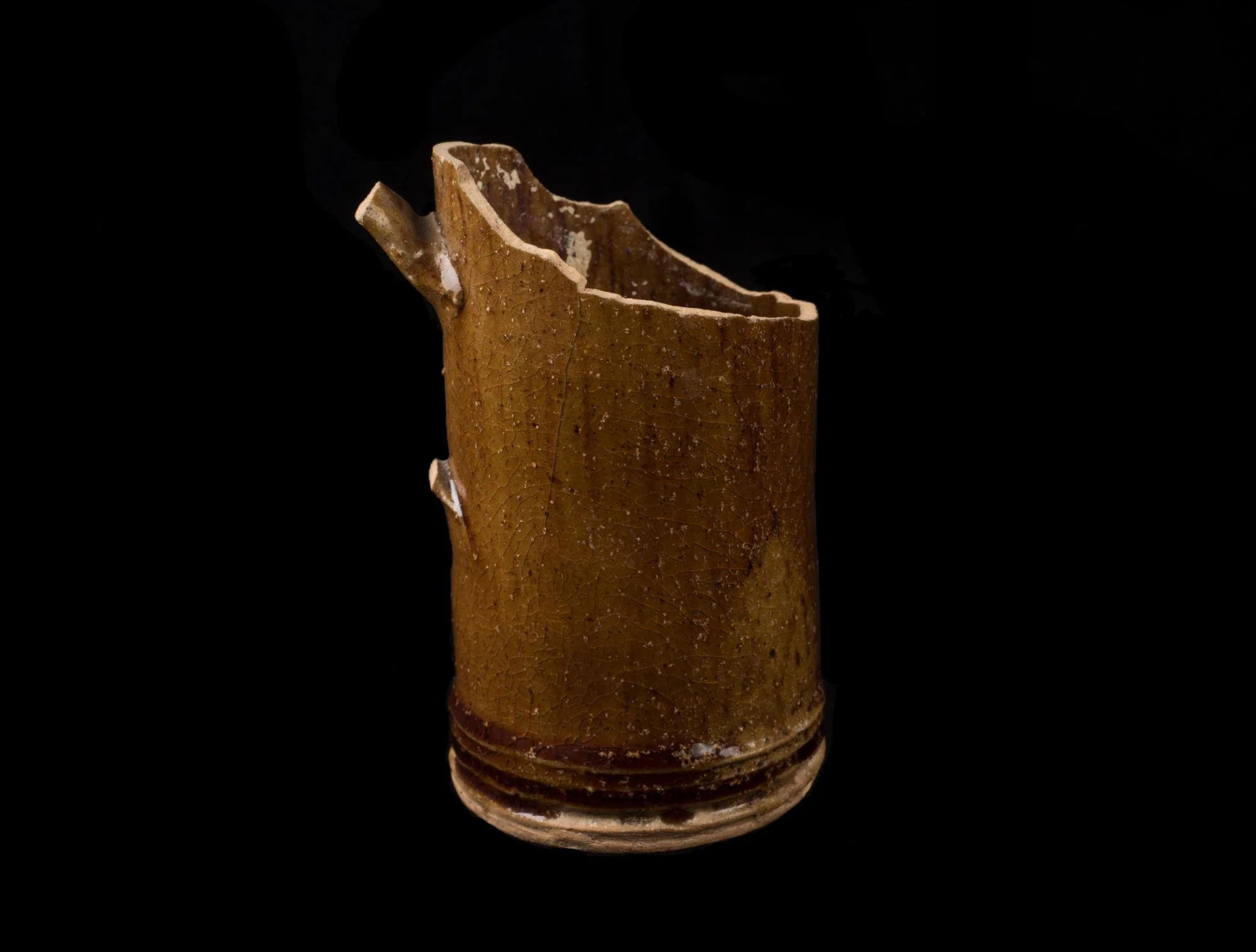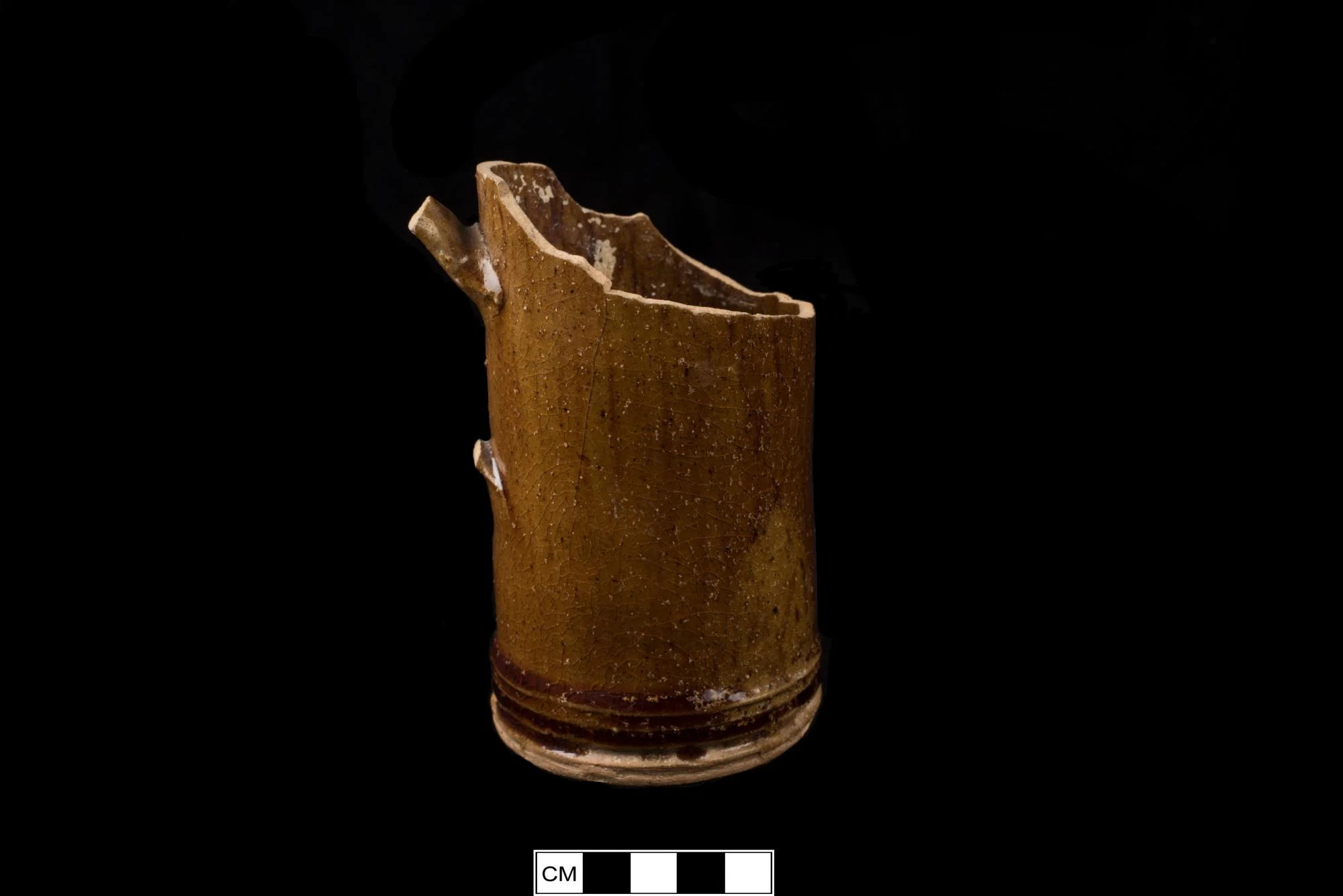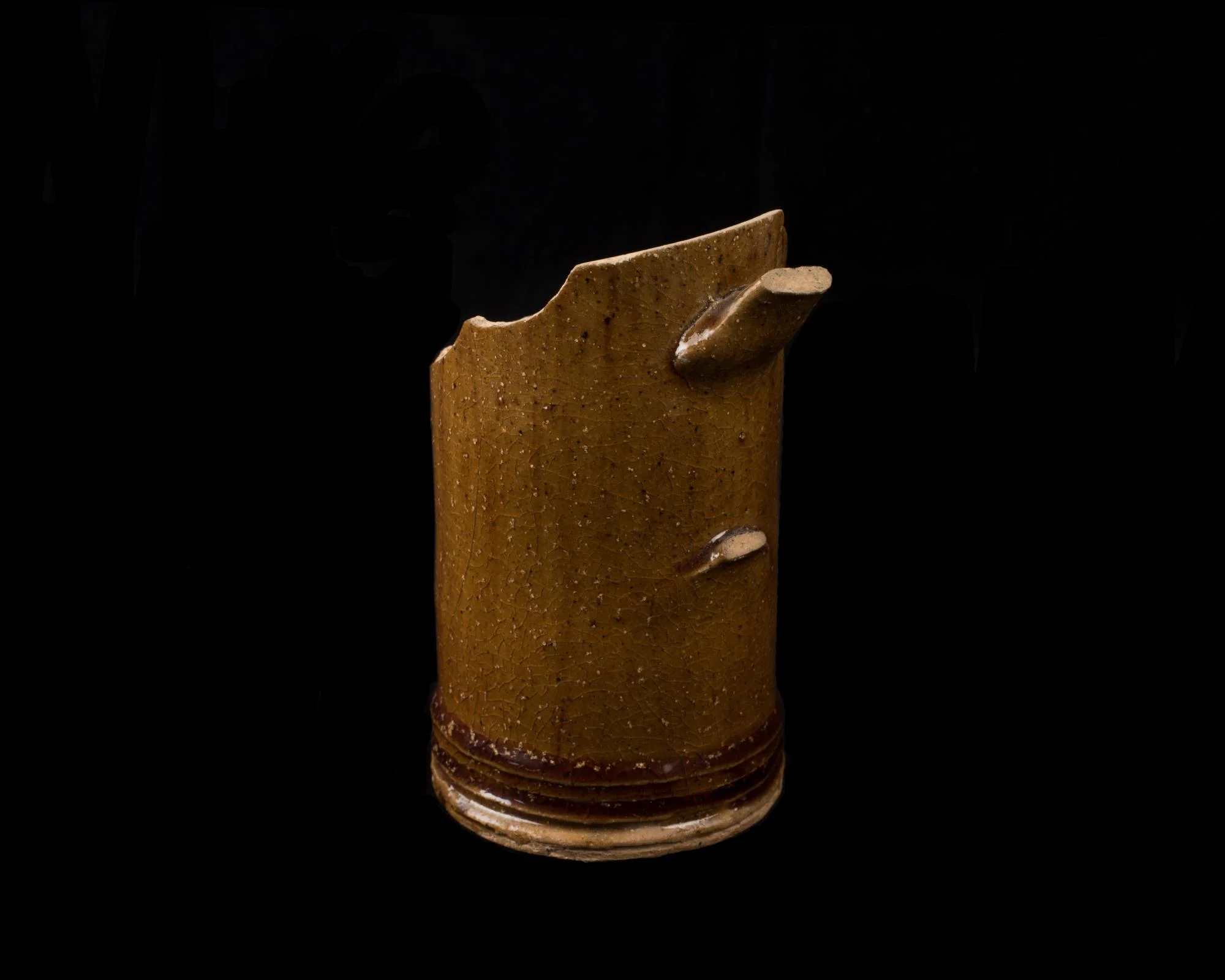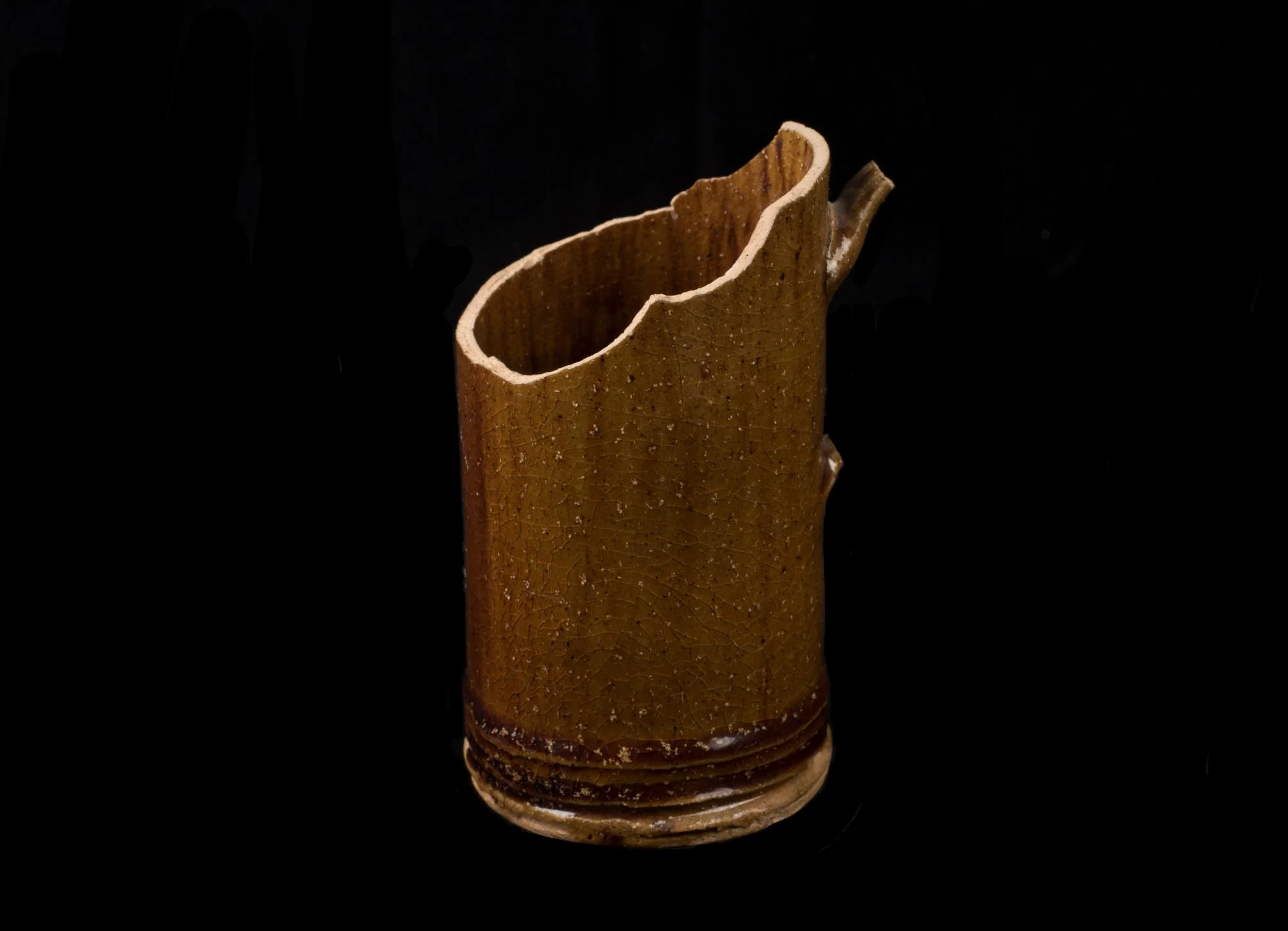Notes
This is a nearly complete handled mug with cordon decoration at the base, made of a coarse earthenware which archaeologists refer to as Staffordshire mottled or manganese mottled. The paste of this ceramic type is often tan or buff with few, if any, inclusions, though larger and thicker vessels can have a mixed paste of buff and pink clays. The term manganese refers to historic descriptions of the glaze, which features a translucent, brown to tan field with dark brown streaking most often. Current research suggests the coloring agent in the glaze may not be manganese, but rather iron. Cordoning, or the fine ridges seen at the vessel base, was produced by pressing a tool into the clay surface while the mug was still on the potter’s wheel. This kind of ceramic was produced in the Staffordshire region from the late seventeenth century through the third quarter of the eighteenth century.
Staffordshire mottled vessels were often “tavern” wares such as mugs and tankards, but could also include larger utilitarian forms, such as milk pans.
Object Type
Has it Been Conserved?
No
Where Was It Found?
Project Site: House for Families [more details]
Material
Vessel
Manufacturing Technology
Form
Completeness
Decorative Technology
Decorative Notes
4 cordons near base.
Date
1680-1780
Country of Origin
Dimensions
85.1mm x 128mm x 128mm (W x H x L)
Illustration shows object in comparison to the size of a quarter
Weight
252 gram(s)
Object Number
1722484. MM V.1
DAACS Number
1722484
Project: House for Families
The structure identified as the “House for Families” on the 1787 Vaughan plan likely housed the majority of the enslaved population living at the Mansion House Farm for much of the second half of the eighteenth century. The building was in existence from circa 1760 until it was demolished in late 1792 or early 1793. The archaeological evidence for the structure consisted of a brick-lined storage cellar (44FX762/40-47) measuring roughly six feet by six feet. Historically the cellar served as a handy trash receptacle once it ceased to be used for its original storage function, and through extensive excavation has yielded an extremely rich assemblage of household refuse. The analysis of these remains offers the opportunity to study important aspects of the daily lives of Mount Vernon's enslaved community.
See All Objects From this Dig




 Ceramic
Ceramic